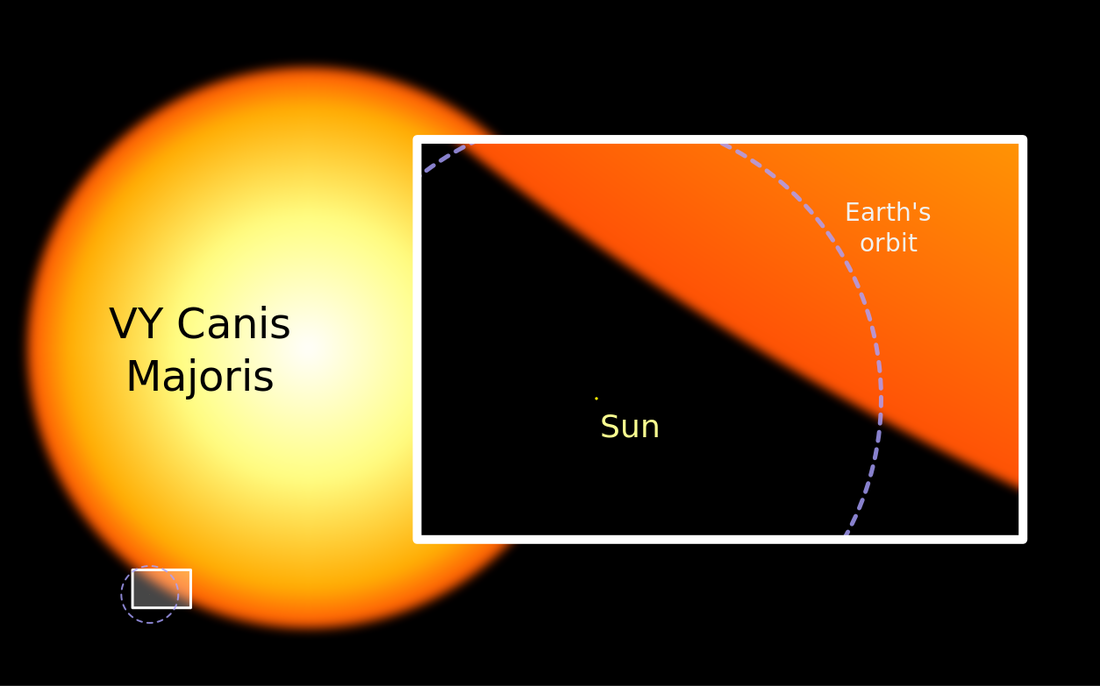|
Victor is a grade 6 student from Calgary and he asked... What is the biggest star in the universe? The biggest star that astronomers know about is called VY Canis Majoris. It's a red hypergiant star located in the constellation Canis Major - the Big Dog. This star is 30 - 40 times the mass of the Sun and 300 000 times more luminous. It has entered the final stages of its life and has expanded to a tremendous size. If this star was located in our Solar System, at the spot that is occupied by the Sun, it would extend all the way out to encompass the orbit of Jupiter! The Sun and Earth's orbit compared to the star VY Canis Majoris.
0 Comments
Your comment will be posted after it is approved.
Leave a Reply. |
About MeThis blog is written by James Durbano. Currently, I am the Director of the Big Sky Observatory and I'm also the owner and operator of the awesome AstroDome Planetarium. Archives
January 2016
Categories |


 RSS Feed
RSS Feed